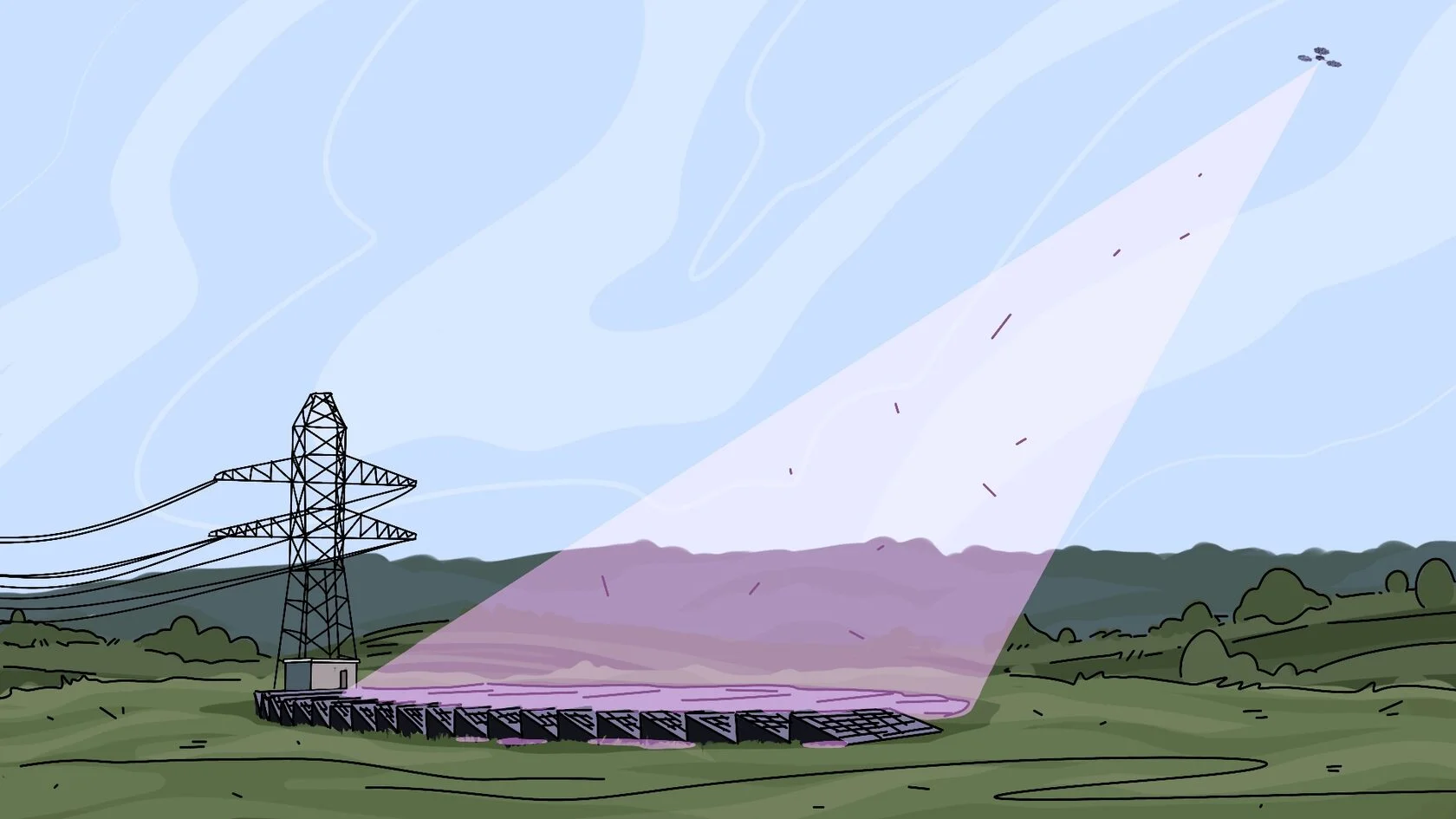Can we build a space station with solar panels, harvest solar energy in space and send it to Earth? Technically — yes, kind of. Is it a good idea? Doesn’t seem like one yet. So we won’t do it then? We actually might! Why? Well, you better read the whole article to find out.
What is space-based solar energy
The first description of solar panels in space that power the Earth appeared in the short story “Reason” by Isaac Asimov. Scientific projects of space-based solar power (SBSP, SSP) have been developed since the 1970s. The whole idea is to build a satellite with photovoltaic modules, harvest the energy in space and send it back to Earth.
Of course, you couldn’t extend a cable from Earth to a satellite. Instead, scientists plan to send solar energy to Earth using microwaves. You would have to build a receiver station. The receiver is an ellipsis-shaped field of antennas that would look like a metal fence. The microwave beam from a solar satellite could point to any location on Earth and get it powered, given that the location has a receiver.
The idea of microwave beams raises safety concerns but so far scientists don’t see space solar projects as dangerous for people. The beam is going to be less intense than natural sunlight on a summer afternoon, John Mankins, ex-Nasa physicist says.

Why did idea of space-based solar power get popular
Why would you bother building a solar satellite when panels work fine on Earth? Do solar panels work better in space or something? They do. Here are the advantages of a space-based solar power system:
• Non-stop production. It is always solar noon in space, meaning that solar panels would work 24 hours a day.
• Higher irradiance. Panels would receive sunlight that is 144% more intense than the maximum level attainable on Earth.
• Power on demand. The microwave beam could be directed to areas that need energy the most. This way you could power remote locations on Earth — for example, the Arctic or Antarctic.
What holds SBSP projects back
As promising as solar-based solar power may seem, there are no projects up to date that would be commercially justified. Here are the most difficult problems with SBSP:
• High costs of launching a satellite into space. NASA’s SERT study results show that space solar power is “economically viable” if recurring launch costs range from $50 to $100 per lb of payload. SpaceX paid around $700 per pound to bring the cargo to low Earth orbit using Falcon Heavy in 2018 — much cheaper than before, but not cheap enough.
• Non-reusable space shuttles. The solar satellite would be built out of smaller modules which means that we would need lots of space launches to build a powerful system. Each launch is a one-way trip which increases the cost of a station.
• Hostile environment. Space debris is a threat to any satellite, especially a large one. Solar panels in space are going to lose 5-10% of their output per year compared to the 0.3-0.7% degradation rate on Earth. It’s hard to maintain a space station and if anything goes wrong, the repair is going to take a lot of time and money.
• Conversion efficiency problem. To use the energy from satellites on Earth, you’d have to convert photons to electrons to photons back to electrons. As a result, only a small fraction of energy generated in space is going to reach the Earth. When talking about SBSP, Elon Musk specifically pointed to the conversion problem.
• High cost and large land footprint of the receiver. For example, a 2,000 MW solar satellite with a mile-wide transmitter would need a receiver that is 3.7 miles in diameter, according to Mankins.
When we set all of these problems aside. The question of what we actually get from this satellite still stands. Even if space solar panels can produce 5-10 times more energy than they would do on Earth, they would hardly be able to compete with solar plants on Earth in terms of cost.
Why pilot projects are already underway
Despite all the concerns, Japan, China, Russia, India, the United Kingdom and the US express interest in SBSP and work on prototypes. Japanese scientists have already tested out wireless electric power transmission microwaves. China plans to generate 1 MW of solar power in space by 2030 and have a commercially viable space solar plant by 2050. How do advocates of SBSP defend these initiatives?
On one hand, some problems with SBSP get solved. For example, the cost of taking 1 lb of cargo today is 4-5 times cheaper compared to the beginning of the 2000s: around $700 per lb compared to $5,000 per lb. SpaceX is working on a fully reusable Starship system that should lower the cost of space flights even further. Photovoltaics also get lighter: in 2017 engineers at the California Institute of Technology presented a prototype solar tile that weighed just 25 grams per ft².
On the other hand, our energy needs continue to grow. By 2050 the demand for energy is going to increase by 50%. Some countries just can’t rely on fossil fuels anymore, nor do they have enough land for ground-based solar plants. That’s why the UK in particular considers solar power in space as one of the ways to achieve net zero.
As humanity’s energy grows, solar power satellites might simply become a necessity. Even though they aren’t designed as profitable now, they might pave the way for better ones in the future. So is it really a surprise that we’re giving it a try? Hey, you gotta start somewhere.
Illustrations – Natalya Absalyamova








